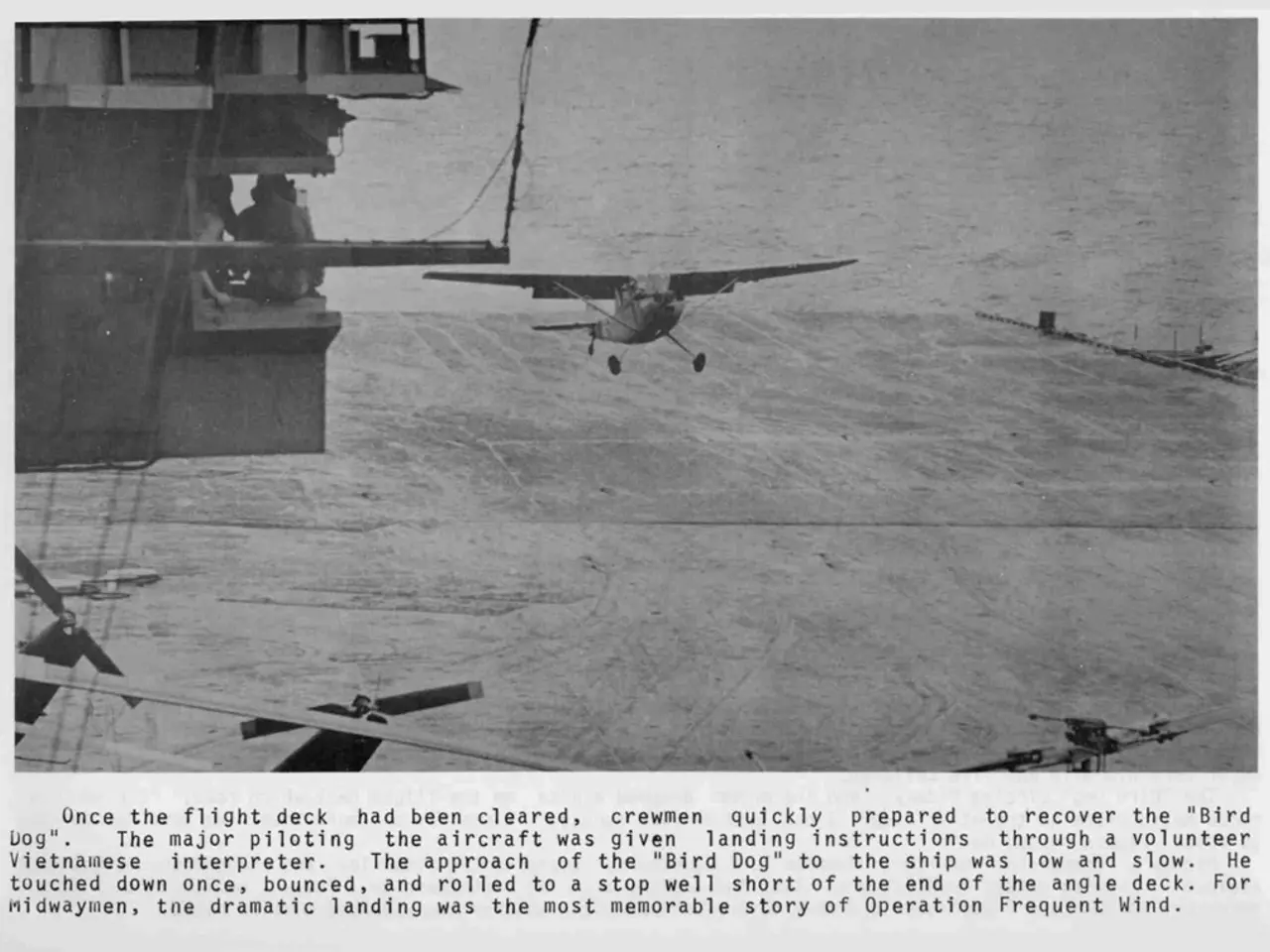Suggested Shift in Military Aerial Refueling Strategy Indicated by Air Force Budget Proposal, Including Potential Increase in KC-46 Production
In a significant shift in strategy, the Air Force has abandoned plans for a direct recapitalization or the development of a next-generation stealthy tanker, opting instead for the extension of existing production lines. This decision, which marks the end of the KC-135 Tanker Recapitalization Program, reflects a priority to continue the use and modernization of current tanker assets while exploring alternative mission systems to enhance survivability.
The focus on modernization is evident in the development of the KC-135 Drone Delivery Mechanism, a prototype that integrates a common launch tube with a modified KC-135 aft hatch door. This innovation aims to adapt the aircraft for modern operational demands, enabling it to launch unmanned aerial vehicles in flight.
The Air Force's plans for its aerial refueling fleet are also centered on connectivity upgrades and self-protection measures. Desired enhancements for the KC-46 include upgraded connectivity and communications, such as the Block 1 Pegasus Advanced Communications Suite and Mobility Air Forces Connectivity. The budget request for KC-46 capability improvements has doubled compared to last year, totaling $81.1 million.
The Air Force is also considering an advanced new tanker, known as the Next-Generation Aerial Refueling System (NGAS). However, budgetary constraints have led to doubts about the development of a stealthy future tanker. The FY2026 budget allocates only about $13 million for "analysis of alternatives work and exploring ways to incorporate new mission systems" to enhance tanker self-protection, rather than advancing towards a new stealthy design.
The budget request for the KC-46 research and development also increases, totaling $40.4 million. The KC-46's Boom Telescope Actuator Redesign is expected to last through the end of fiscal 2027. Government testing for correction of deficiencies in the KC-46's Remote Vision System is expected to continue through at least December 2025.
Looking ahead, the Air Force plans to retire its remaining A-10s in 2026, but the budget documents do not suggest cutting the boom project off. A "Tanker Production Extension" program is planned to follow the KC-46 production, aiming to extend the life of the KC-46 fleet. Officials are seeking $23.8 million for the Tanker Production Extension project in 2026.
The Air Force is in discussions on transitioning the KC-135 Drone Delivery Mechanism to a program of record and implementing the capability on the KC-135 fleet. The 2026 budget request includes $12.96 million for NGAS, focusing on market research and modeling.
The Pentagon has previously explored the idea of deploying drones from mobility aircraft, such as the Defense Advanced Research Projects Agency's Gremlins program and the Air Force's Rapid Dragon project. The Air Force's emphasis on adapting existing assets to meet modern operational demands without immediately developing a new stealthy tanker suggests a strategic approach that prioritizes the extension of current capabilities while evaluating the best path forward for future tanker requirements. Acquisition strategy approval is anticipated in FY 2025, according to the budget documents.
- The KC-135 Drone Delivery Mechanism, integrating a common launch tube with a modified KC-135 aft hatch door, is under development, aiming to adapt the aircraft for modern operational demands.
- The Air Force is focusing on connectivity upgrades and self-protection measures for its KC-46 aerial refueling fleet, with enhancements like the Block 1 Pegasus Advanced Communications Suite and an increased budget request for capability improvements.
- The Next-Generation Aerial Refueling System (NGAS) is being considered as an advanced new tanker, but budgetary constraints have led to an emphasis on exploring ways to enhance tanker self-protection rather than designing a new stealthy model.
- The Air Force's budget request for the KC-46 research and development has increased, with projects like the Boom Telescope Actuator Redesign extending through fiscal 2027, and government testing for deficiencies in the KC-46's Remote Vision System continuing through December 2025.
- The Air Force is planning to transition the KC-135 Drone Delivery Mechanism to a program of record, implement it on the KC-135 fleet, and seeking funds for NGAS in the 2026 budget for market research and modeling, as part of a strategic approach that prioritizes extending current capabilities while evaluating future tanker requirements.




